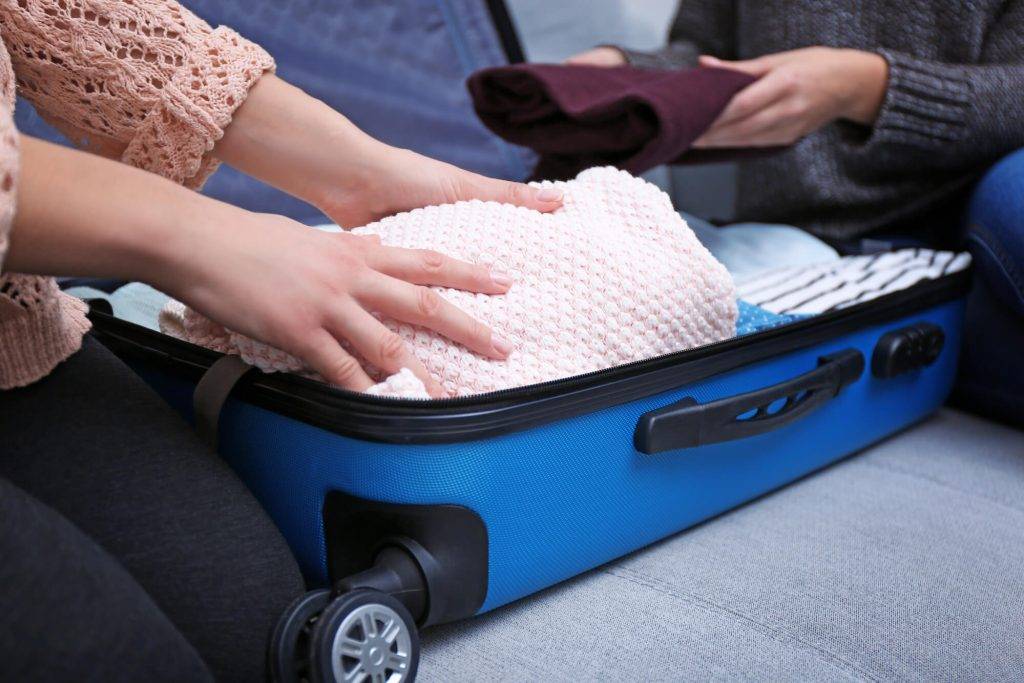
If you’re going to receive chemotherapy as part of your treatment plan, it’s likely that your healthcare provider has recommended a port, also called a port-a-cath. A chemo port is a small implantable device about the size of a quarter that is placed under the skin and has a flexible tube that connects to a large vein.
Ports allow chemotherapy drugs to be delivered directly into the bloodstream. A port is surgically implanted by an interventional radiologist, but it is a simple procedure. There is mild discomfort at first as the incision sites heal, but most say the procedure is worth it. Ports make it easier for your treatment team to draw blood, provide chemo meds or IV fluids without having to constantly stick needles in your arms or other areas to access veins.
Ports are typically inserted on the right side of the upper chest, about an inch or so below the right collarbone. Most get a single lumen port, which provides one access point. Some may have a double lumen port, which is more oblong-shaped, allowing for two access points.
Your skin may be raised up about a half an inch after the port is placed, but most people won’t be able to tell you have the small device. You’ll likely be able to feel it underneath the skin.
Getting enough sleep is crucial during cancer treatment, as it helps the body heal and regenerate. But sleeping comfortably with a port can be a challenge. In this post, we’ll share some tips and tricks for sleeping with a chemo port. By following these tips, you can improve your sleep quality, reduce pain and discomfort, and feel more rested and rejuvenated during your cancer treatment.
Tips for Sleeping with a Chemo Port
Check Your Bed
It may not seem like a good idea at the beginning of an expensive treatment process, but if your mattress is old, worn out, or used to the point where you roll into the middle in the night, you may want to look into getting a new mattress. You’ll need a comfortable mattress that provides plenty of support.
Not only do you need a good night’s sleep so your body can heal, you may spend lots of daytime hours in bed too, depending on how your body reacts to the chemotherapy. This means your bed should be a comfy place that doesn’t require you to frequently change sleeping positions in order to be able to rest.
Positioning Yourself in Bed
When sleeping with an implanted port, it’s important to find a comfortable sleeping position that doesn’t put pressure on the port site. You may need to try new sleeping positions Here are some tips for positioning yourself in bed:
- Sleep on your back: Sleeping on your back is recommended, as it allows your body to distribute weight evenly and ensures minimal contact with the right side of the chest. If you’ve never been a back sleeper before, strategic placement of body pillows can help ensure you don’t roll over and put pressure on the port, which can cause discomfort.
- Sleep on your side: If you prefer side sleeping, try positioning yourself so that the non-port side of your body is closest to the mattress. You may also find it helpful to place a pillow between your knees to align your spine and reduce discomfort.
- If you must sleep on the side where your port has been placed, then prop pillows between your arm and torso to prevent pressure on the port.
Clothing and Bedding
Choosing the right clothing and bedding can also make a big difference in your comfort level when sleeping with a chemo port. Here are some tips:
Wear loose-fitting clothes
Tight clothes can be uncomfortable, especially if they rub against the port. Opt for loose-fitting, comfortable clothing instead.
Avoid pajamas that have buttons down the front or are made from rough or non-breathable fabric. I recommend bamboo, because they are breathable, incredibly soft pajamas.
Here’s a capri pajama set for women.
This set has a satin V-neck, which would be super smooth on the skin and port.
Men can try these bamboo tank tops or undershirts.
This chemo port pillow is small and wraps around tank top pajama straps for men and women for extra padding and protection.
Soft and breathable bedding
Soft, breathable bedding can help reduce scratching on the skin and discomfort. Look for bedding made from bamboo or breathable fabrics with wicking properties. Avoid synthetic materials that can trap heat and moisture.
These are my favorite sheets. My mother-in-law also loved hers while she was bedridden for months.
Switching it Up & Getting Support

Sleeping partners can play a big role in ensuring you get a restful night’s sleep. Sometimes swapping places to sleep on the opposite side of the bed will provide just enough additional mattress support that you can get comfortable and relax. Partners can also help place pillows around you once you’ve gotten settled in. Some find sleeping on a firm couch for naps or shorter rests helps because it keeps them from rolling around.
Sleeping Other than in Bed
If you sleep in the car, this seat belt pillow provides adjustable cushioning to keep the belt from digging into the right side of your chest. It’s a must-have if you travel in the car for any length of time. Larger pillows are also available.
Practice Good Sleep Hygiene
While not necessarily related to a port, there are certain sleeping habits that promote healthy, restful sleep and are beneficial for everyone. Some of these include:
- Stick to a regular sleep schedule: Try to go to bed and wake up at the same time every day, even on weekends.
- Create a relaxing bedtime routine: Develop a relaxing bedtime routine that helps you wind down and prepare for sleep. This might include taking a warm bath, reading a book, practicing relaxation techniques, or listening to hypnotherapy or guided meditations.
- Avoid caffeine and alcohol: Caffeine and alcohol can interfere with sleep, so it’s best to avoid them in the hours leading up to bedtime.
Managing Discomfort
Even with the right positioning and bedding, you may still experience discomfort when sleeping with a chemo port. Here are some tips for managing discomfort:
- Over the counter pain medication: Talk to your doctor about medication that can help reduce discomfort. Be sure to follow your doctor’s instructions carefully.
- Cold compresses: Applying a cold compress to the area around the port can help reduce inflammation and discomfort. You can use a cold pack or a bag of frozen peas wrapped in a towel.
- Relaxation techniques: Relaxation techniques like deep breathing, meditation, or visualization can help reduce stress and tension, which can increase discomfort. Try incorporating these techniques into your bedtime routine to promote relaxation and improve sleep quality.
Conclusion
Getting enough and getting good quality sleep are important parts of healing and recovery during cancer treatment. Sleeping with a chemo port can be challenging, but there are several strategies you can try to make it more comfortable. By adjusting your sleep position, using pillows and cushions, and wearing loose, comfortable clothing, you can reduce pressure and discomfort around your chemo port and get a better night’s sleep.
Medical disclaimer: The content on My Cancer Resources is provided for informational and educational purposes only, and is not intended as medical advice, or as a substitute for the medical advice, diagnosis or treatment by a physician or other health care practitioner.



